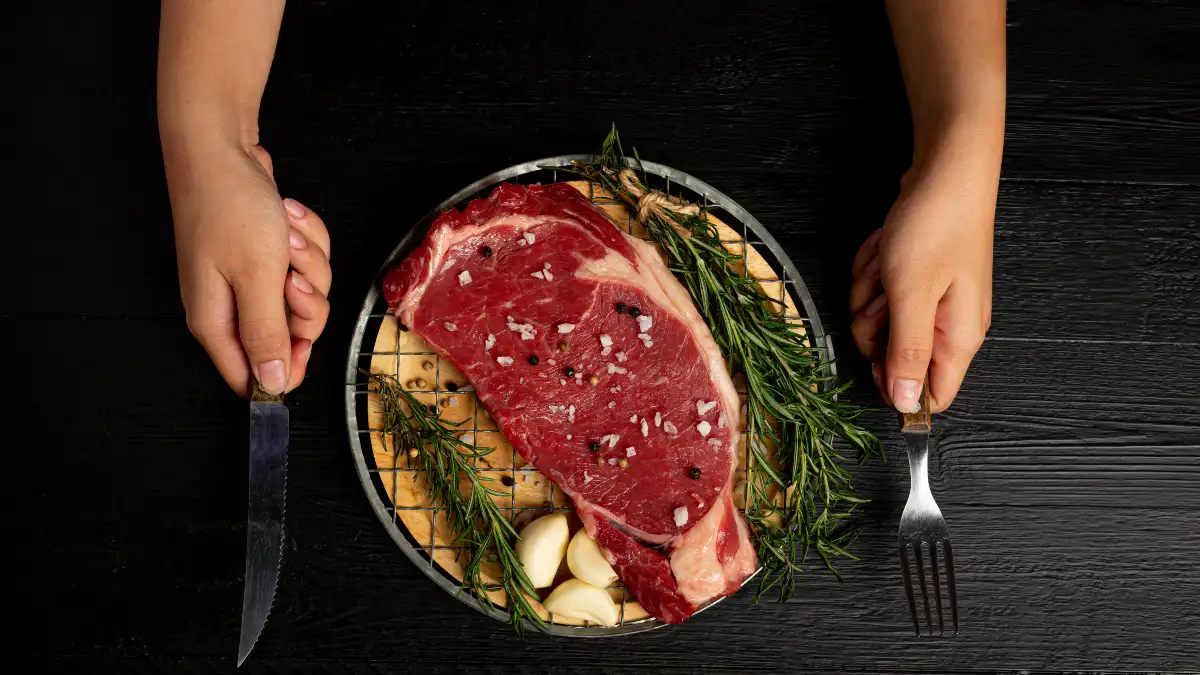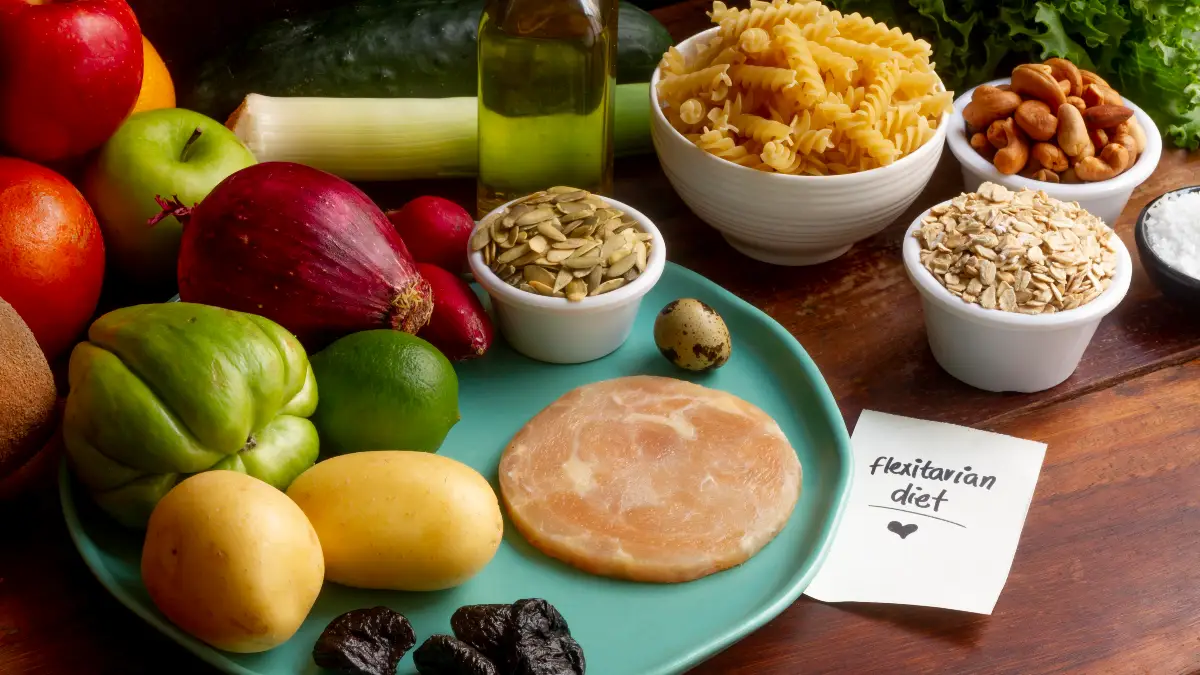That miracle diet promising fast results is likely a metabolic trap. In a world obsessed with speed, fad diets promoted by celebrities are everywhere, offering a magical solution for weight loss.
Behind the hype, but, lies a serious threat. These plans can quietly wreck your body’s engine. While the scale drops quickly, the long term consequences like muscle loss and hormonal chaos are severe.
This report cuts through the noise to reveal the lasting harm these popular diets can cause.
What Is Your Metabolism, Anyway?
To see how fad diets hurt you, you first need to know about your metabolism. It’s not just “fast” or “slow.” Your metabolism is a smart and busy network of processes inside your body that keeps you alive.
Your Body’s Energy Factory
At its heart, metabolism is how your body turns food into energy. This energy powers everything you do, from flexing a muscle to thinking a thought to making new cells. Your metabolism is always balancing two different jobs:
- Breaking Down (Catabolism): This is when your body breaks down big food molecules—carbs, fats, and proteins—into smaller parts like glucose, fatty acids, and amino acids. This process releases energy for your body to use right away.
- Building Up (Anabolism): This is when your body uses that energy to build and repair itself. It helps you grow new cells, keep your muscles strong, and store extra energy as fat for later.
A healthy metabolism can switch between these two jobs easily, depending on what your body needs. For example, after you eat, it’s in building mode. When you exercise, it’s in breaking-down mode.
The Energy You Burn by Just Being Alive
A lot of the energy your body uses each day is for things you don’t even think about. The energy you need to breathe, pump blood, balance hormones, and make new cells while you’re resting is called your Basal Metabolic Rate (BMR).
Your BMR is the biggest part of the calories you burn every day. Many things affect it, like your size, gender, and age. But science is clear on one thing: the more muscle you have, the higher your BMR. Muscle tissue is active and burns a lot of energy just to exist, even when you’re sitting still. Fat tissue, on the other hand, burns very little. This is a key reason why many fad diets cause lasting harm.
The Hormones in Charge
Your metabolism doesn’t run on its own. It’s controlled by hormones. Here are two of the most important ones:
- Insulin: Your pancreas releases insulin when your blood sugar goes up, usually after you eat carbs. Insulin tells your cells to grab sugar from your blood. This controls your blood sugar and helps store energy.
- Thyroid Hormones (T3 & T4): Your thyroid gland makes these hormones, which act like your body’s thermostat. They tell almost every cell in your body how fast to run.
7 Diets That Can Wreck Your Body’s Engine
Fad diets have different rules and strange reasons for why they work, but many of them hurt your metabolism in similar ways. Let’s look at seven popular diets and see what they do to your body.
1. The Ketogenic (Keto) Diet

The keto diet says it can help you lose weight fast, fix insulin problems, and make your mind clearer. It does this by changing your body’s main fuel source. You cut carbs to less than 50 grams a day and eat a lot of fat (70-80% of your calories). This forces your body into a state called ketosis, where it burns fat for energy instead of sugar.
The keto diet can be helpful for certain medical issues, like severe epilepsy. But using it for general weight loss over a long time has serious risks that people often ignore.
This is a strange and dangerous side effect. In the short term, keto can help your blood sugar because you’re not eating sugar. But long-term studies on animals show a worrying change. Mice on a keto diet for a long time became unable to process sugar properly. This wasn’t because their bodies ignored insulin (like in type 2 diabetes). Instead, the cells in their pancreas that make insulin got damaged. They couldn’t release enough insulin when sugar was present. This means that while your body gets good at living without carbs, it may lose the ability to handle them if you ever eat them again.
2. The Carnivore Diet

The carnivore diet is one of the most extreme diets out there. It claims to help with weight loss, reduce swelling, and fix digestive and autoimmune problems. The rule is simple: eat only animal products like meat, fish, and sometimes eggs and dairy. You must cut out all plant foods.
The biggest and most immediate problem with a no-plant diet is that it starves the good bacteria in your gut. Fiber, which is only found in plants, is the main food for these helpful microbes. They break down fiber and produce things called short-chain fatty acids (SCFAs). SCFAs are very important for keeping your colon healthy, controlling your immune system, and fighting swelling in your body. A diet with no fiber causes a huge loss of these good bacteria. Studies on high-red-meat diets consistently show major, negative changes in gut bacteria.
Animal foods have some important nutrients, like vitamin B12 and iron. But a carnivore diet is missing many others. It has almost no Vitamin C, which your body can’t make on its own. It also cuts out all the protective compounds found in plants, called phytonutrients. These include things like flavonoids and polyphenols. They are powerful antioxidants that fight swelling and are important for metabolic health. Not having them in your diet is linked to a higher risk of long-term diseases. While some followers say you can get everything you need from animals, this usually means eating organ meats, which most people on the diet don’t do. This creates a high risk of missing out on many important vitamins and minerals.
3. The Paleo Diet

The Paleo diet tells you to eat like our ancient ancestors. The idea is that our bodies haven’t had time to adapt to foods that came with farming. This “mismatch,” they say, is why we have so many modern diseases. So, the diet allows meat, fish, eggs, vegetables, fruits, nuts, and seeds. It cuts out grains, beans, dairy, refined sugars, and processed foods.
A big danger of the Paleo diet comes from cutting out whole grains and beans. These foods are a top source of special fibers that are key for a healthy gut. Long-term studies of people on a Paleo diet show a bad shift in their gut bacteria. Compared to people eating a normal balanced diet, Paleo followers have fewer good bacteria that make a healthy substance called butyrate. At the same time, they have more of a bacteria called Hungatella. This bacteria is good at making something called TMA. When you eat red meat (which is high in compounds like choline), bacteria like Hungatella turn them into TMA in your gut. Your liver then changes TMA into TMAO. TMAO is a substance that is directly linked to clogged arteries and is a strong sign of future heart problems.
Cutting out whole food groups makes it very likely that you’ll miss out on nutrients that are important for your metabolism.
The Paleo diet cuts out two of the biggest sources of iodine in a modern diet: iodized salt and dairy. This greatly increases the risk of not getting enough iodine. A two-year study showed that women on a Paleo diet had much lower iodine levels than those on a standard diet. Iodine is a key part of your thyroid hormones (T3 and T4). Not getting enough can lead to a slow thyroid and a slower metabolism.
4. Very Low-Calorie & Liquid Diets (Juice Cleanses & “Detoxes”)

Juice cleanses and other liquid “detox” diets are sold as a fast way to clean your body, get rid of “toxins,” and jump-start weight loss. These plans usually mean you drink only fruit and vegetable juices, or other special liquids, and eat no solid food for a few days to a week or more.
This is the worst and most lasting damage. These diets are extremely low in calories and have almost no protein. When your body faces this sudden lack of energy and protein, it goes into a deep survival mode. It starts aggressively breaking down its own tissues for fuel. A main target is your active muscle. This loss of muscle directly and greatly lowers your Basal Metabolic Rate (BMR). It slows down your body’s engine. This makes it harder to keep weight off in the future and easier to gain fat back.
Juicing removes the fiber from fruits and vegetables. What’s left is a liquid full of simple sugars. Drinking this liquid sugar without any fiber, protein, or fat—which all slow down digestion—causes a fast and huge spike in your blood sugar. This is followed by a big rush of insulin, which often overcorrects and leads to a blood sugar crash. This up-and-down cycle of high and low blood sugar puts a lot of stress on your pancreas and your body’s sugar-control system. It can lead to feeling tired, headaches, dizziness, and being irritable.
The main promise of these diets is a marketing lie. Your body has its own very smart and effective detox systems that work all the time: your liver and kidneys. The liver changes harmful things into compounds that can dissolve in water. The kidneys then filter these from your blood and get rid of them in your urine. There is no scientific proof that drinking only juice helps these organs work better or removes any so-called “toxins.” In fact, by not giving your body the building blocks (like amino acids and vitamins) that these detox pathways need, these diets might actually get in the way of the very processes they claim to help.
5. The Alkaline Diet

The alkaline diet is based on the idea that modern diets are too “acid-forming.” This, it claims, leads to a state of constant acid in the body that causes diseases like cancer and weak bones. The fix is to change your body’s pH to be more alkaline. You do this by eating “alkaline-forming” foods (mostly fruits, vegetables, nuts, and beans) and avoiding “acid-forming” foods (meat, poultry, fish, dairy, eggs, grains, and processed foods).
The alkaline diet is different from other fad diets. Its main harm isn’t direct physical damage. Instead, it spreads a completely wrong scientific idea that leads to needless and possibly harmful food rules.
The central claim of the alkaline diet—that what you eat can change the pH of your blood—is not possible. Your body keeps your blood pH in a very tight range of about 7.35 to 7.45. It does this with powerful systems in your blood and is carefully controlled by your lungs (which get rid of acid as carbon dioxide) and your kidneys (which get rid of extra acid or base in your urine). A big change from this range is not a result of your diet; it’s a life-threatening medical emergency. While your food can change the pH of your urine as your kidneys work to keep balance, it does not change the pH of your blood.
While the diet’s reason is fake science, the type of eating it is against is related to a real nutritional idea: Dietary Acid Load (DAL). DAL is the total amount of acid your body produces after digesting food. Foods high in protein and phosphate (like meat and cheese) create a higher acid load. Foods high in potassium and magnesium (like fruits and vegetables) create an alkali (or base) load.
6. The Atkins Diet

The Atkins diet, created in the 1960s, was one of the first popular low-carb diets. It claims that eating too many carbs is the main cause of weight gain and metabolic problems. The diet promises fast weight loss by severely cutting carbs. This forces your body into ketosis to burn fat for energy. It’s known for its four-phase plan. It starts with a very strict “induction” phase (about 20 grams of carbs a day) and then slowly adds carbs back in as you get closer to your weight goal.
The way the Atkins diet is set up—a very strict first phase followed by easier phases—is a recipe for weight cycling. The “induction” phase is so strict that it often causes fast initial weight loss, which is very motivating. However, this first drop is mostly water weight from used-up glycogen, not fat. The extreme food limits make this phase impossible for most people to stick with long-term. As you move to later phases and add carbs back, your body refills its glycogen stores (along with water), and weight is often quickly regained. This can be frustrating and make people go back to the strict first phase, starting the harmful yo-yo effect all over again.
Unlike a steady keto diet (which has its own risks), the Atkins plan has people go in and out of ketosis as they move through the phases. A healthy metabolism is flexible and can switch fuel sources. But being forced in and out of an extreme state like ketosis over and over is not natural or harmless. This constant switching of your body’s main fuel can be stressful for your metabolism and doesn’t lead to the stable, long-term function that is a sign of good health.
7. The Whole30 Diet

The Whole30 diet doesn’t call itself a weight-loss diet. It’s marketed as a 30-day “nutritional reset.” The goal is to improve your health, change your relationship with food, and find foods you might be sensitive to. The plan requires you to strictly cut out several food groups for 30 days. These include all added sugar, alcohol, grains, beans, dairy, and soy. After 30 days, you are supposed to slowly add these foods back to see how they affect your body.
Although it’s called a “reset,” the plan is extremely restrictive. The all-or-nothing rules, which require you to be perfect for 30 days with no “cheating,” can lead to a damaging cycle of restriction followed by overeating when the program is over. By labeling a wide range of foods as “bad” or off-limits, the diet can make you feel guilty, anxious, and judgmental about eating. This way of thinking is a sign of disordered eating and works against building a lasting, healthy relationship with food.
While doctors sometimes use targeted elimination diets to diagnose specific food allergies, Whole30’s plan to cut out entire healthy food groups for everyone is not backed by good science. For example, the program makes you cut out all beans and whole grains. This goes directly against a large body of nutrition science that links eating these high-fiber foods to a lower risk of metabolic disease, better gut health, and better long-term health.
Conclusion
The promise of a quick fix, made louder by a billion-dollar diet industry, has created a world where diets with no scientific backing are sold as the key to good health. This report has looked closely at the claims of seven popular fad diets—Keto, Carnivore, Paleo, Juice Cleanse, Alkaline, Atkins, and Whole30. It has shown, with facts, the specific ways they can cause long-term metabolic harm. The conclusion is clear: the promises of fast, easy change come with the high and often hidden cost of a broken metabolism.
The patterns of damage are consistent. These diets cause you to lose active muscle, which directly slows down your metabolism. They can cause harmful hormone problems, from making it hard for your body to handle sugar to slowing down your thyroid. They can destroy your gut microbiome, which we now know is key to metabolic health. Worst of all, their strict and unsustainable rules keep you in the yo-yo diet cycle. This pattern of losing and regaining weight makes your body composition worse and further damages your metabolism with every try. These are not harmless eating experiments; they are attacks on a complex biological system.


